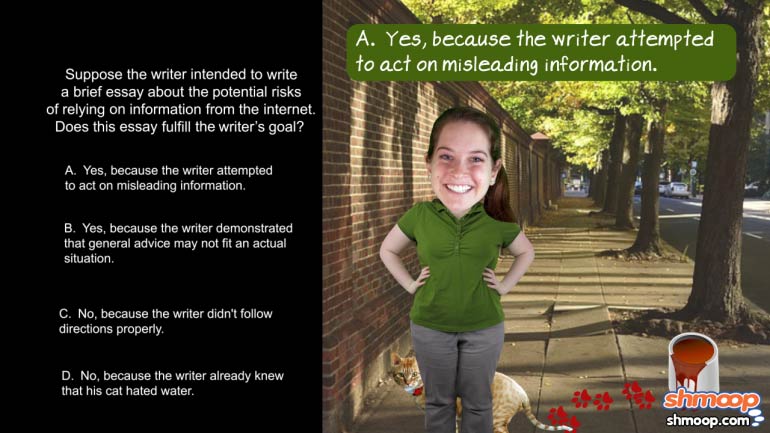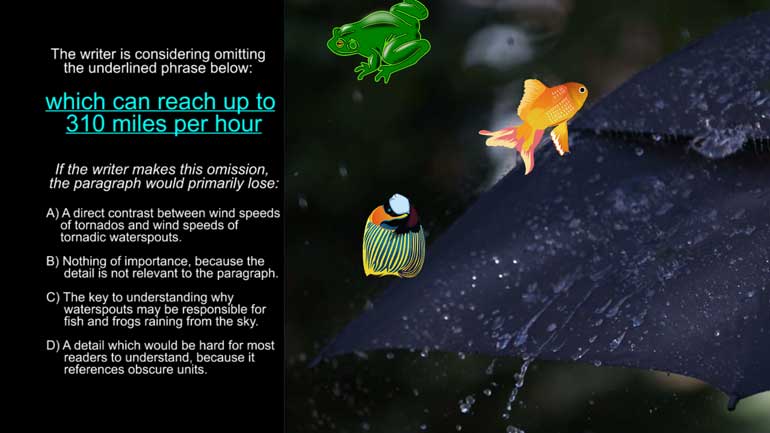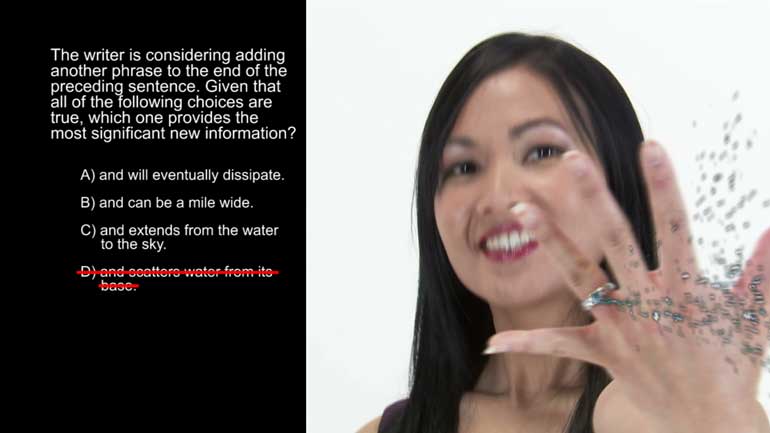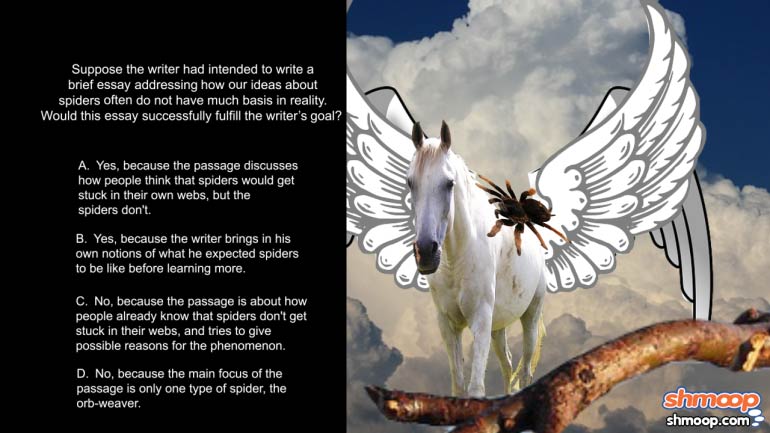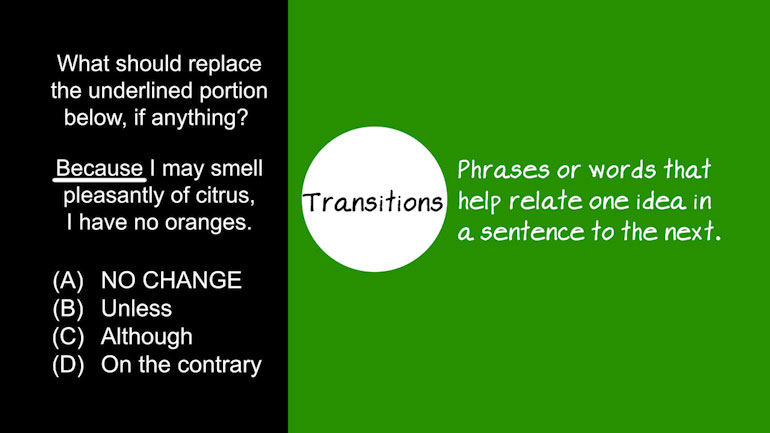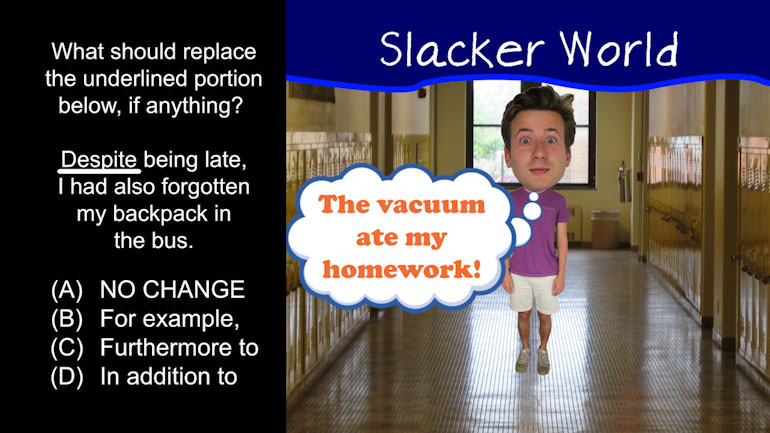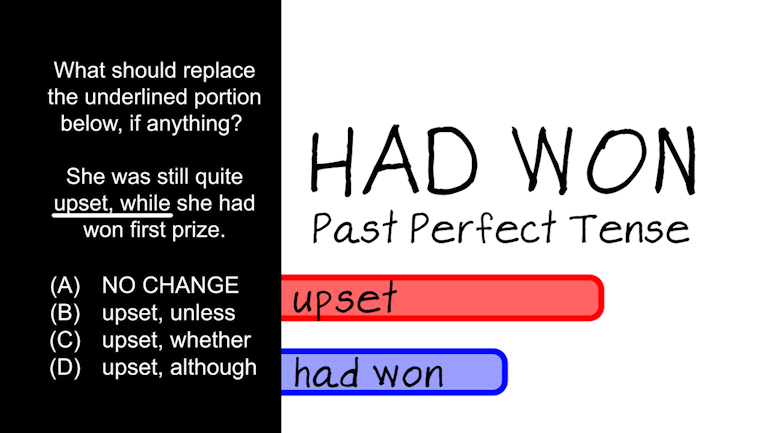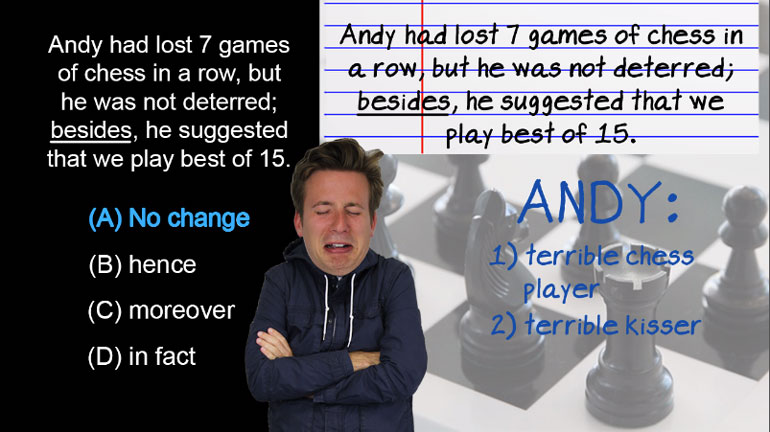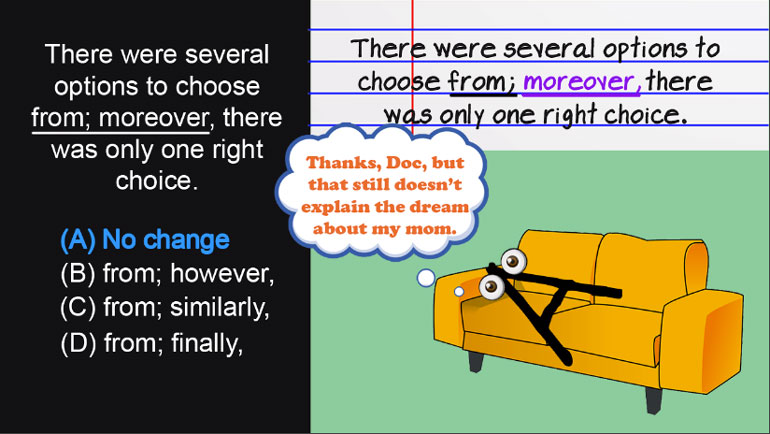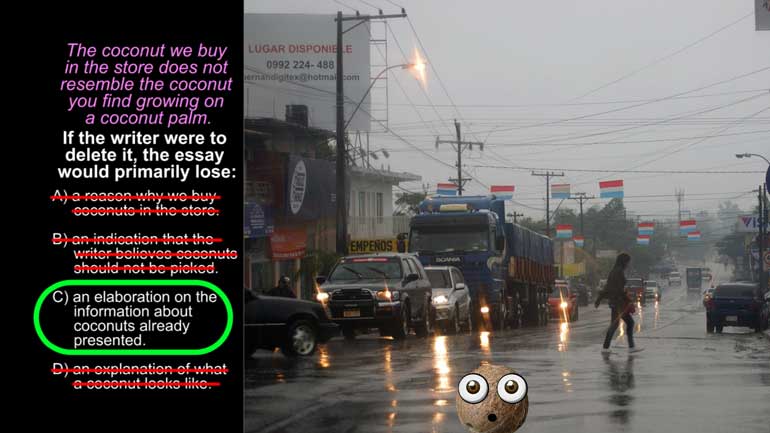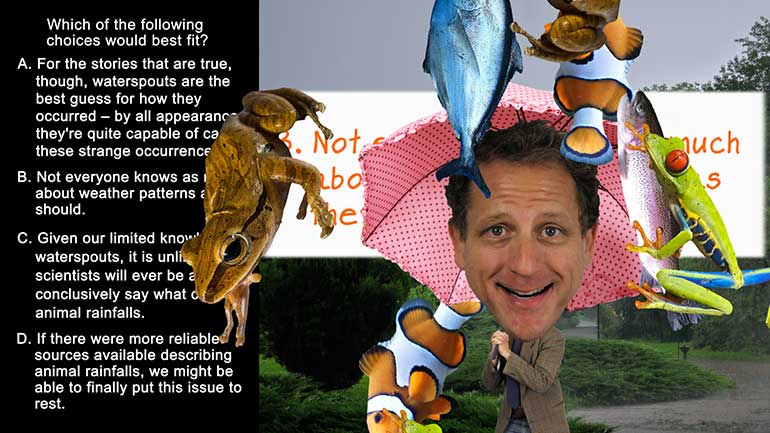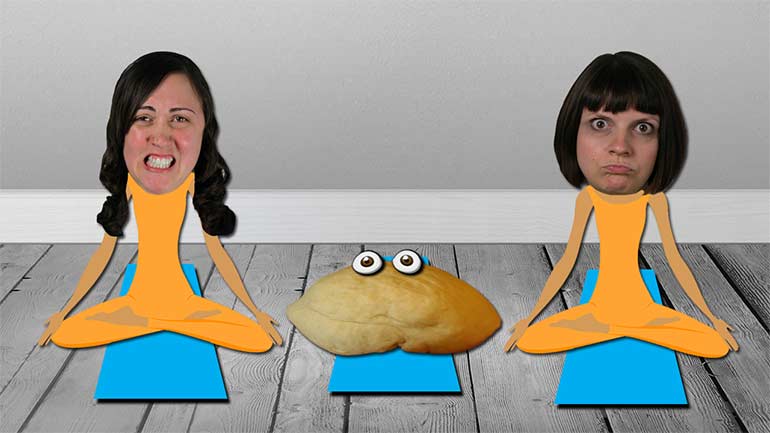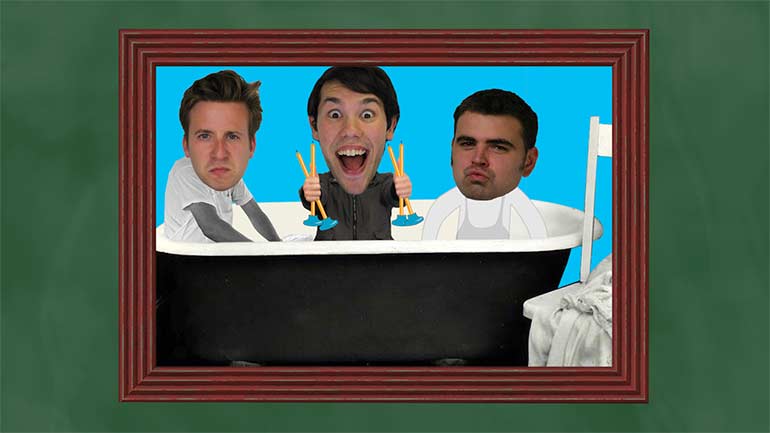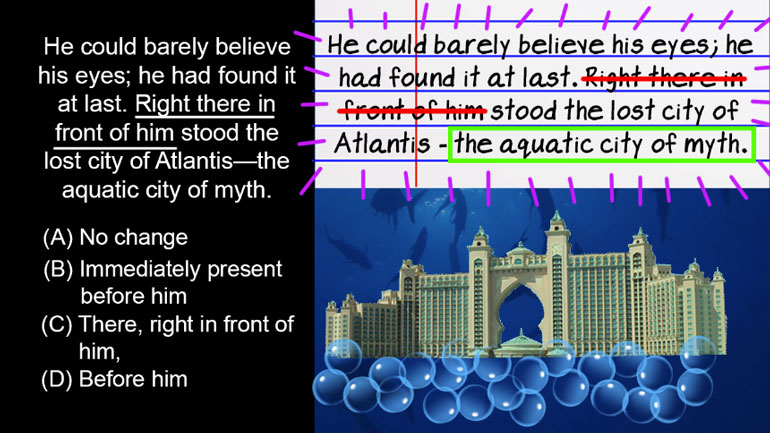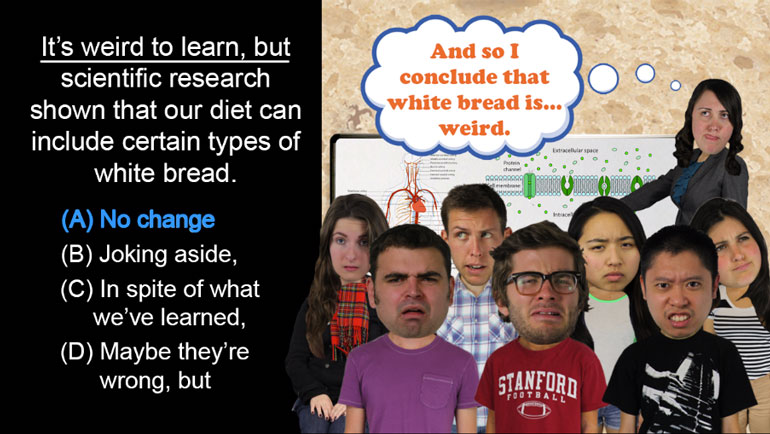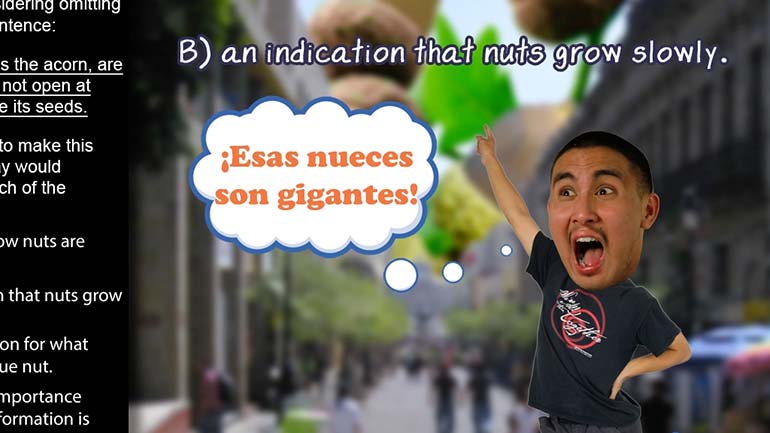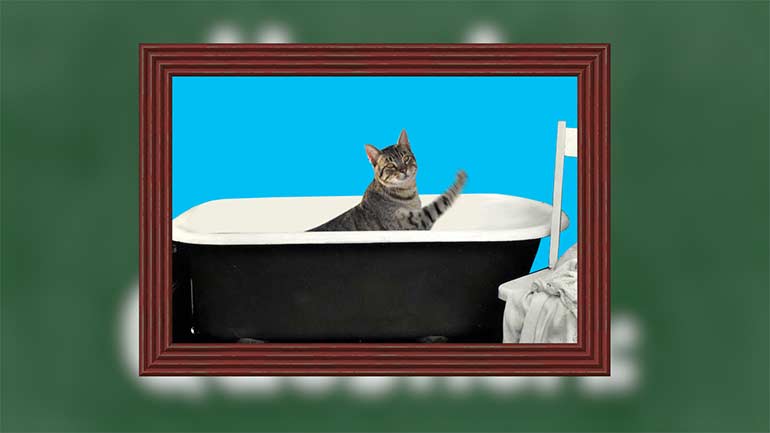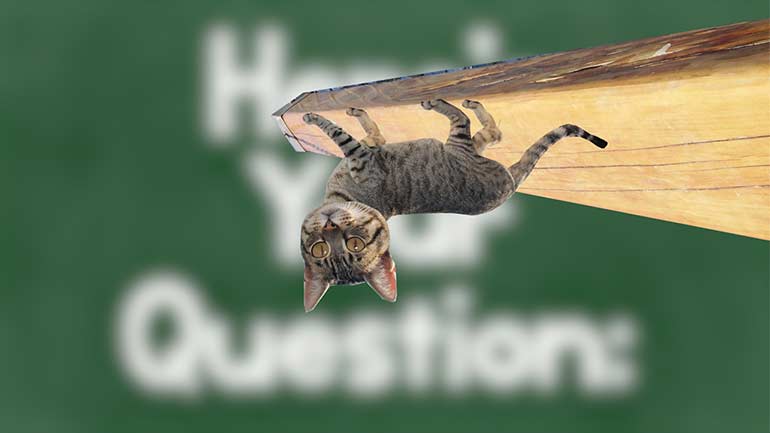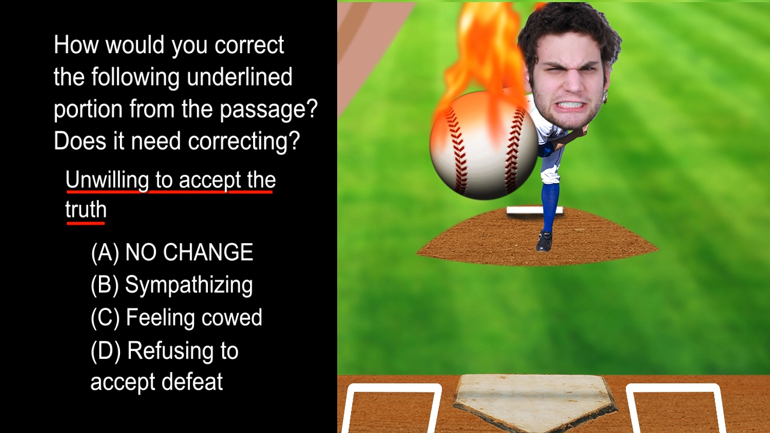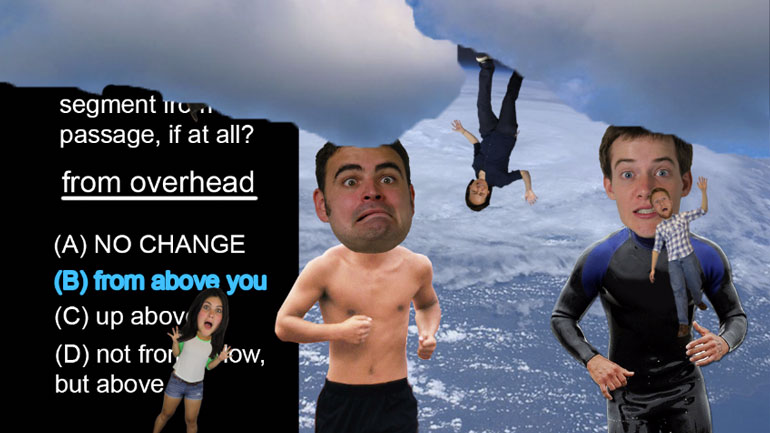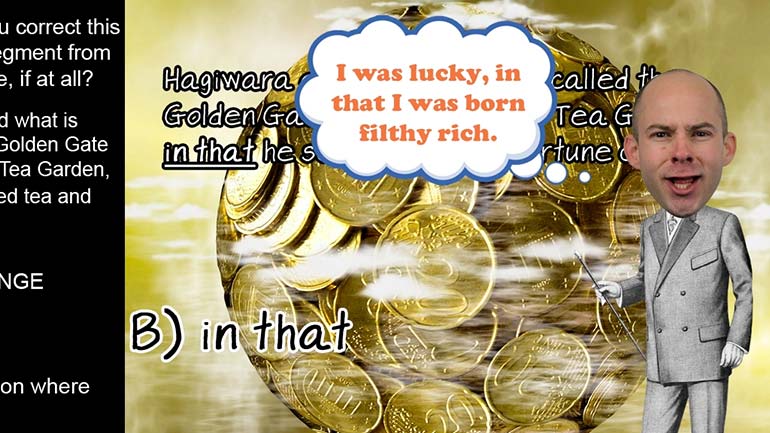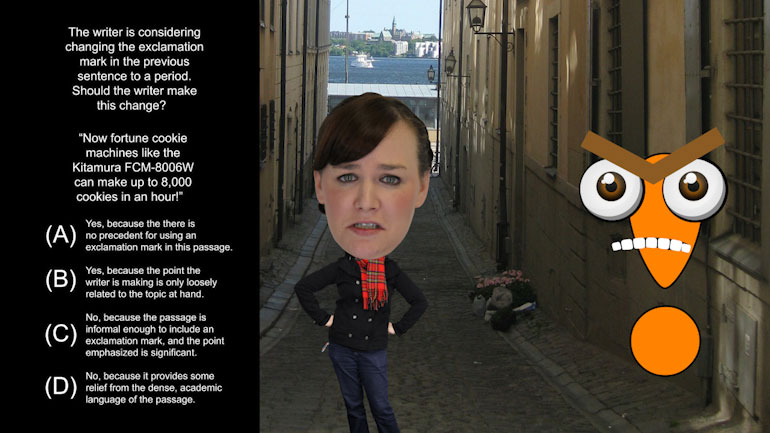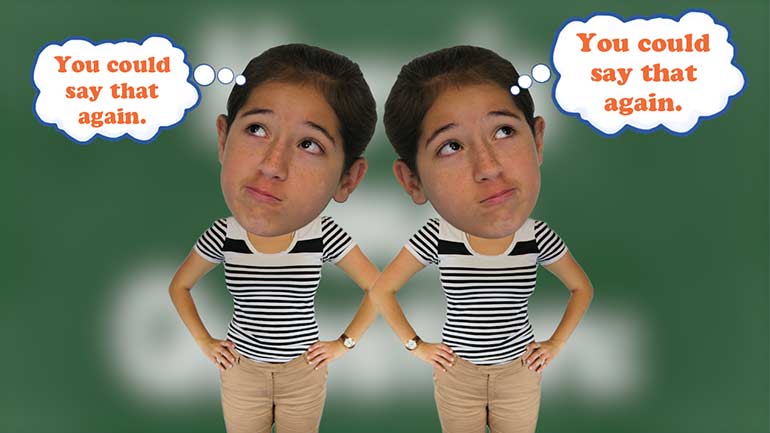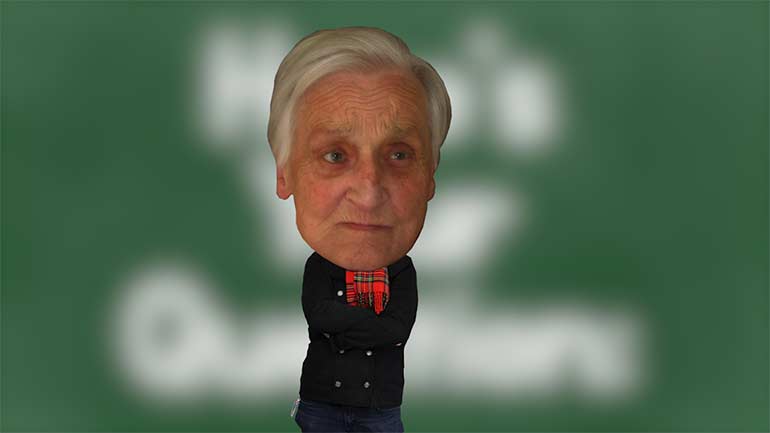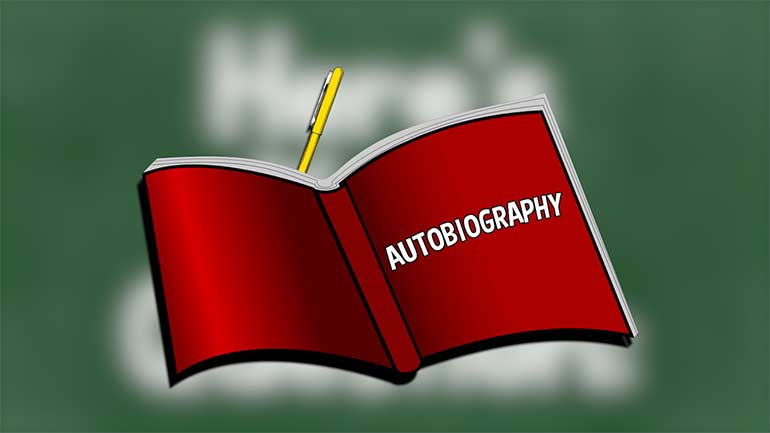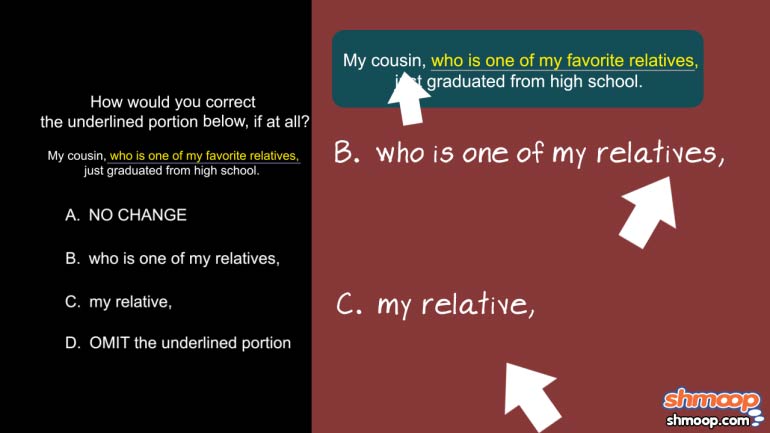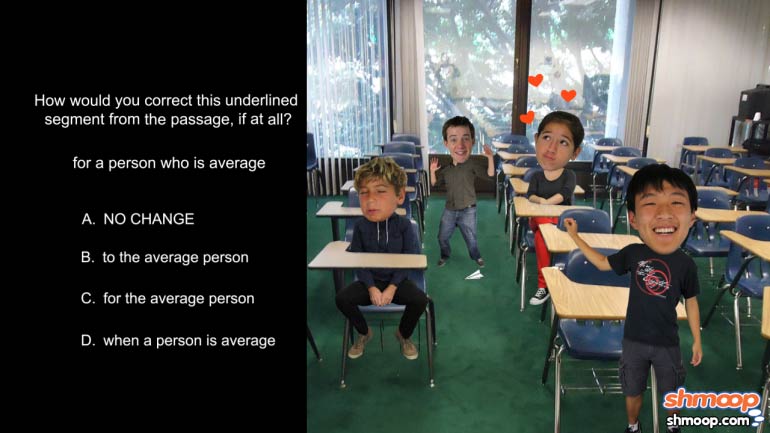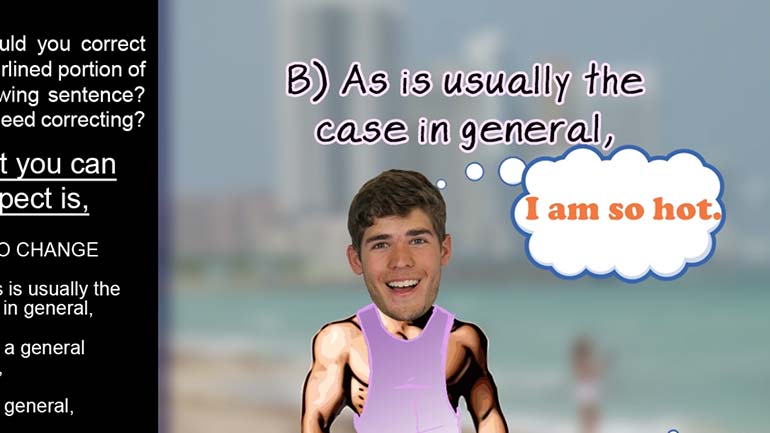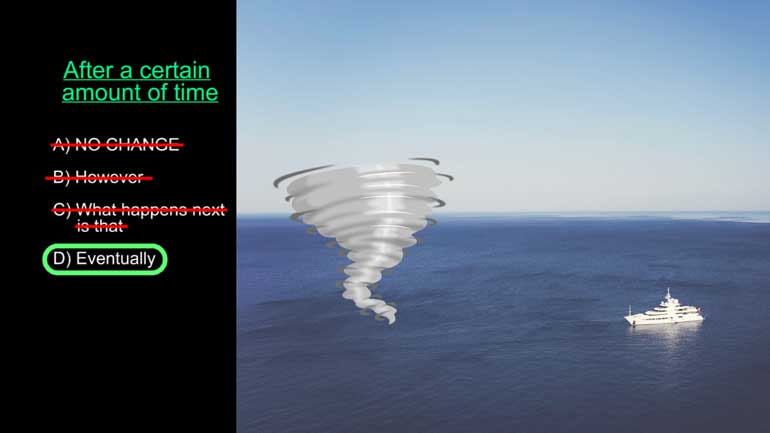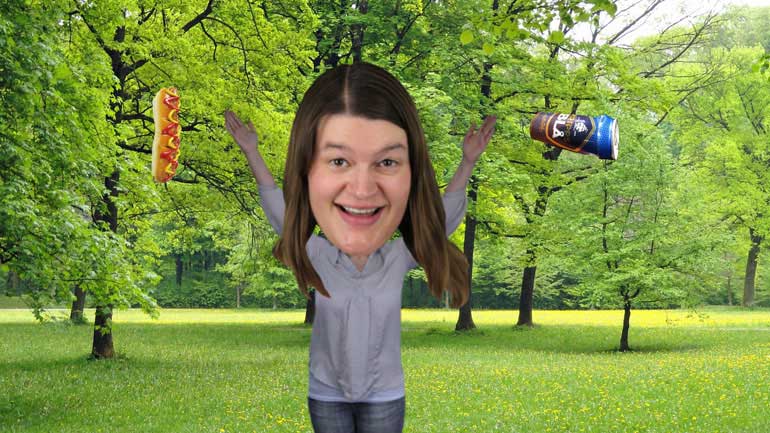ShmoopTube
Where Monty Python meets your 10th grade teacher.
Search Thousands of Shmoop Videos
Rhetorical Skills Videos 50 videos
ACT English: Passage Drill 2, Problem 11. Which of the following sentences would make the most effective transition?
In this ACT English passage drill determine if the writer of the passage may or may not have achieved their proposed goal.
ACT English: Passage Drill Drill 3, Problem 2. What would the paragraph lose if the writer omits the underlined phrase?
ACT English 5.9 Passage Drill 188 Views
Share It!
Description:
ACT English : Passage Drill 5, Problem 9. For the sake of logic and coherence in this paragraph, where should sentence 5 be placed?
Transcript
- 00:03
Here’s your Shmoop du jour, brought to you by spider web weaving.
- 00:07
It turns knitting into the blood sport we always knew it could be.
- 00:11
Check out the following passage...
- 00:29
For the sake of the logic and coherence of this paragraph, Sentence 5 should be placed where?
- 00:34
And here are the potential answers...
Full Transcript
- 00:39
Like a spider’s web, good writing follows logical patterns.
- 00:43
If it’s great writing, it ensnares us like a spider’s web too.
- 00:47
Though hopefully the writer’s end goal isn’t to wrap readers in silk and drink their blood.
- 00:52
As is, the paragraph has some issues with its flow of logic.
- 00:56
Without our help, this writer isn’t going to be ensnaring readers any time soon.
- 01:01
We can eliminate choice (A) because Sentence 5 is currently misplaced.
- 01:05
The paragraph as a whole takes us through the methodical web-building process of orb-weaving
- 01:10
spiders from start to finish.
- 01:13
Sentence 5, however, starts out like this...
- 01:15
“An orb-weaver begins its web...”
- 01:18
The word “begins” is key here. Since Sentence 5 is telling us how orb-weavers begin their
- 01:23
process, there’s a very good chance that it ought to be closer to the beginning.
- 01:27
Currently, this paragraph is a very messy web.
- 01:30
Option (D) doesn’t help matters.
- 01:33
Sentence 3 details a step in the middle of the web-weaving process.
- 01:36
So placing a sentence that describes the early process directly after 3 muddles the chain of events.
- 01:45
We don’t have a lot of personal experience with web weaving, but we figure any time one
- 01:48
puts the first step after the third trouble is bound to ensue.
- 01:53
Choice (B) is promising because it does place Sentence 5 close to the beginning--
- 01:56
all the way at the top of the paragraph in fact.
- 01:59
This doesn’t work either, though, because the paragraph begins with this sentence...
- 02:03
“We will focus on orb-weavers because their webs are the most recognizable.”
- 02:08
This sentence gives us a great introduction for the paragraph....
- 02:11
And sets us up to hear about the orb-weaving process.
- 02:14
We can’t begin the description of the process until we know we’re about to hear it.
- 02:18
Choice (C) is the correct answer.
- 02:20
Sentence 5 is now placed snuggly after the intro and flows gracefully into Sentence 2.
- 02:25
With this adjustment, the paragraph is now ready to ensnare eager readers.
- 02:29
We’d proceed with caution if we were you.
Related Videos
ACT English: Punctuation Drill 2, Problem 2. Where should the semi-colon be placed?
ACT English: Punctuation Drill 3, Problem 1. How should this sentence be changed so that it is grammatically correct?
ACT English: Punctuation Drill 3, Problem 2. How should we properly hyphenate the words in this sentence?
ACT English: Punctuation Drill 3, Problem 4. Which choice best formats this list of items?
ACT English: Punctuation Drill 2, Problem 1. Which choice of punctuation best completes the sentence?

